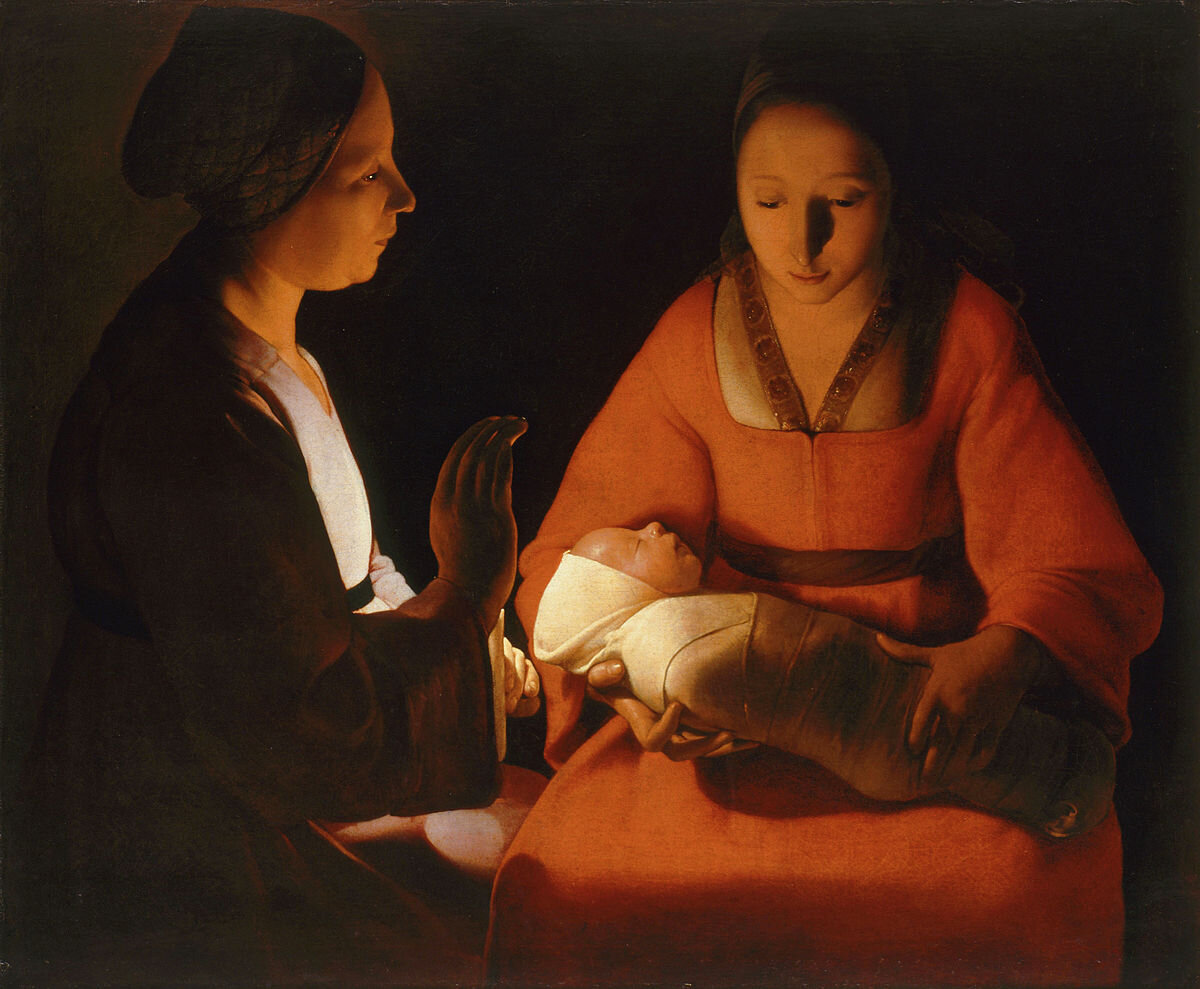Chateaubriand, 1809 by Anne-Louis Girodet de Roussy-Trioson.
Chateaubriand was an important French historical figure and writer whose English chef would make him more famous than his exploits.
Your Custom Text Here

Chateaubriand, 1809 by Anne-Louis Girodet de Roussy-Trioson.
Chateaubriand was an important French historical figure and writer whose English chef would make him more famous than his exploits.


October, 1877 by James Tissot, Montreal Museum of Fine Arts
Another example of a Tissot model Kathleen Newton, the same one (I believe) as here. Often artists used the same models, even the same costumes as similar garments turn-up again and again.

Kathleen Newton (model)


Louise de Broglie, The Countesse d'Haussonville by Jean-Auguste-Dominique Ingres, The Frick Collection
Ingres was a French 19th Century painter known for his realism. I am particularly fond of his fabrics - so realistic and so lush.

Detail

Still Life with Three Puppies, 1888 by Paul Gauguin, the Museum of Modern Art, NYC.
This was painted by Gauguin the same year he lived with van Gogh.

The New-born, c. 1640 by Georges de la Tour, Musee des Beaux Arts, Rennes.
Often artists would mask religious scenes by setting them in the present and leaving out all of the traditional "signs" of a religious nativity scene such as a halo on the mother and child, but the calm the beauty and the presence of a figure who could be perceived as St. Anne, seem to indicate a religious meaning.

Composition 8, 1914 by Piet Mondrian, The Guggenheim Museum, NYC.
This is Mondrian's interpretation of a tree after seeing the cubist work of Braque and Picasso. He eventually took it to an even more abstract level.

Piet Mondrian Composition C (No.III) with Red, Yellow and Blue © 2007 Mondrian/Holtzman Trust c/o HCR International, Warrenton, VA

Ballet Rehearsal 1874 by Edgar Degas. The Metropolitan Museum.
The teacher in these paintings was actually a dancer and friend of Degas and not the class teacher. His name was Jules Perrot.

La classe de danse (The Dancing class), c.1873-75 by Edgar Degas, Museé d'Orsay, Paris.
Degas had access to all areas of the dancer's world and took advantage of this capturing them at rest, rehearsing, performing and dressing. They were a subject he returned to frequently over the years.

Archangel Gabriel, 13th Century AD, Notre Dame Cathedral, Reims,France.
Notre Dame at Reims is the first example of the High Gothic style of architecture. It is highly decorated with carving, sculpture and stained glass. It sustained a great deal of damage after the French Revolution and during WWII.

Archangel Gabriel with Mary

Houses of Parliament, London, 1905 by Claude Monet, Musee Marmottan, Paris.
Another of Monet's views of Parliament. His goal was to paint the same thing in different light, which in turn would make a different impression, much darker, yet recognizable.

Houses of Parliament, London, Sun Breaking Through the Fog, 1904 by Claude Monet, Musee d'Orsay,Paris.
Monet, like Turner recorded the London Parliament buildings but his was a study of the same building at different times of the day.

An Image from the Hall of Bulls, the Caves at Lascaux, Dordogne,France.
The caves at Lascaux contain some of the earliest known art work to be created by man. They are dated to between 13,000 to 15,000 BC and were discovered in 1940. They were open but carbon dioxide from visitors was damaging the paintings so they were closed in 1963 to preserve them.
Toulouse-Lautrec immersed himself in the world of dance halls, becoming friends with the performers. He saw the upper class men of his birth, visit these lower class venues looking for drink and prostitutes and must have felt that at least his working friends in the venues were the more honest about who they really were.

Merry Jesters by Henri Rousseau 1906
Rousseau frequently visited the botanical garden in Paris for inspiration, he then concocted scenes with wild animals in his imagination and put them on canvas. His style was admired by other artists for it's straightforward and untrained style.


La Libre Esthetique exhibition poster by Gisbert Combaz, Library of Congress
The Art Nouveau style was created as a reaction to the literal styles which dominated most of the 19th century. It is primarily a decorative style which utilizes sinuous shapes and naturalistic plant forms to create flowing movements.

Dancers in the Wings by Edgar Degas, 1876-78, Pastel
Degas is well known for his superior ability to draw and to fade into the background so that he could capture a scene without influencing what was happening.

Sunday Afternoon on the Island of Grand Jatte by Georges Seurat, Art Institute of Chicago.
Seurat did preparatory drawings everyday for six months getting ready to paint this picture of people relaxing on a day off. The style is called Pointillism and involves using color dots to create the image. Who knows how Seurat would have refined the style he invented if he had not died at the age of 32.
Love you, Mom!

Monkey (study for La Grande Jatte), 1884 by Georges Seurat, The Art Institute of Chicago.
Seurat made hundreds of studies for his painting La Grande Jatte, some just small pencil sketches like this, some on-site oil sketches, and even full large scale drafts.

Matthias Grunewald, detail, Isenheim Altarpiece,1510-15,
These fantastic monsters are part of one of the most amazing pieces of art to come out of the 16th century. There are three different views or openings and the final view is a wood carving.

Ball at the Moulin de la Galette by Pierre Auguste Renoir, Musee d'Orsay.
Renoir was studying the effects of light at different times of the day at one of his favorite venues and as he enjoyed himself with his friends - good work if you can get it. One of the most famous of the Impressionists, he was working closely with Monet at this time. Check out Kahn Academy for some great videos on art and artists.